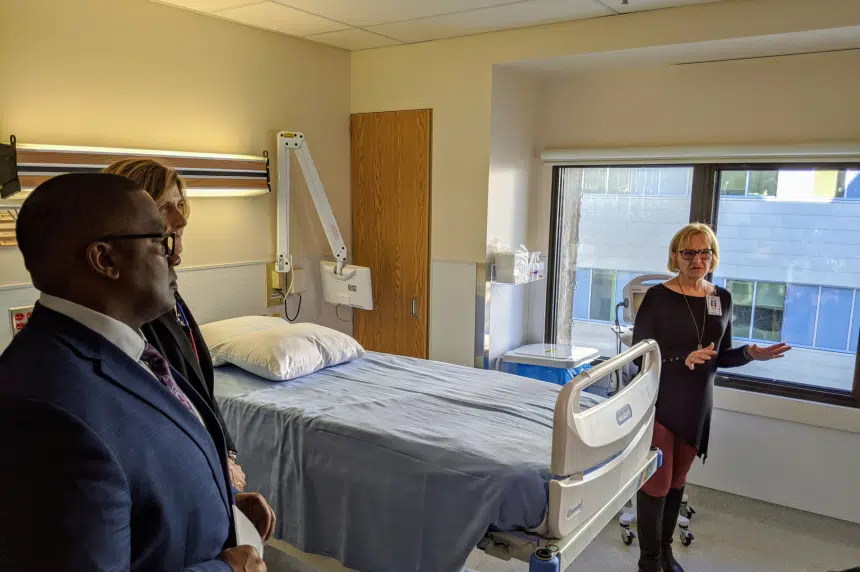Health Minister Jim Reiter wasted little time to address emergency room concerns in the province’s major hospitals by announcing 36 new beds opening at a unit at Royal University Hospital.
Reiter was addressed in a letter sent by Saskatchewan Health Authority officials Thursday that detailed two independent reviews findings into why emergency rooms in Regina and Saskatoon were overflowing and finding a path forward to alleviate those issues.
One of the issues was addressed in Friday’s announcement by expanding the amount of permanent acute care in-patient beds to 48 by including 12 already existing adult medicine overflow beds.
“People need to be admitted and there’s not a bed available,” Reiter said. “There are now more beds available while (patients) wait for wherever they need to get to.”
Thursday’s review found that one of the issues hampering emergency care was long-term patients being stuck in major centres for longer than necessary due to complex needs, creating a “bottleneck” effect as more patients are added to units with little to no space available.
“You might have a number of people that need to be admitted but no bed available,” Reiter said. “They’re essentially referred to as hallway medicine… it’s better for staff, it’s better for patients.”
Norma Noesgaard, the manager of the new medicine 5152 unit, is pleased to see the months of hard work come to fruition after plans to open more beds were announced last June.
“We did get lucky, but it’s not really luck,” Noesgaard said of alleviating emergency room issues. “We did gather a lot of information to try and understand where we were short of space.”
The unit provides care for a wide spectrum of illnesses not included in surgery. Examples include diabetes complications, breathing issues and cancer.
Plenty of planning took place within the hospital and outside consultants to determine where any available beds were needed most. Renovations and changes in the area of RUH that formerly housed the postpartum unit is also hoped to alleviate long stays plaguing emergency rooms.
Noesgaard said much more space is available for staff and patients to limit the amount of falls, another SHA concern for long stays, in addition to smaller details like nearby showers and medical stations so doctors aren’t travelling long distances for patient visits.
“Currently there are roughly on average 90 to 110 medical patients at the site for four medical physicians to look after these patients, because we didn’t have a unit such as this we would have to walk six kilometres a day to see those patients,” Dr. Anne Pausjenssen, general internal medicine, said.
“It was challenging to be on the ward and seeing patients multiple times a day.”
Another facet of the review was the ongoing work to alleviate issues and the teamwork involved from all levels of care, including the SHA and the province.
Reiter said the government’s track record of investing in healthcare in Saskatchewan should translate into more investment on budget day.
“The best indicator of future behaviour is past behaviour,” Reiter said. “If you look at the amount of money that this government’s invested in healthcare, I think we’re up over 60 per cent in healthcare spending since we were given the privilege of forming government… I think it’s fair to say you’re going to continue to see that in the future.”
Starting up the new unit cost around $1.7 million with an annual cost of $8 million to operate the unit annually, with a $500,000 donation from the Royal University Hospital Foundation helping outfit rooms with necessary furniture and equipment.
The beds will open for use on March 9.







